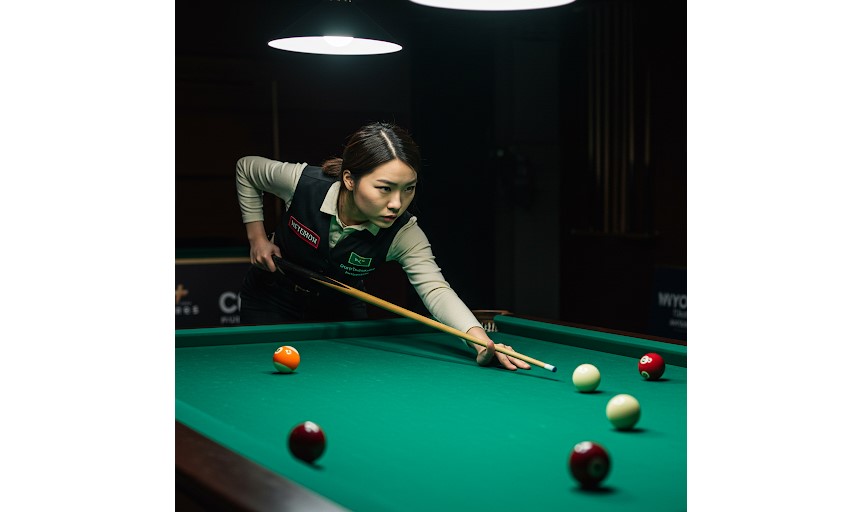
Title: Artistic Billiards: A Masterpiece of Precision, Strategy, and History
Artistic Billiards is a captivating sport that blends geometry, finesse, and flair into a breathtaking display. It stands apart from other cue sports due to its artistic nature and structured challenges. The beauty of Artistic Billiards lies in its perfect union of precision and creativity. With roots deeply embedded in European history, the game has grown steadily, influencing communities and competitions across continents. Artistic Billiards has not only earned its place in the world of sports but also in cultural and educational arenas. As we delve deeper, let us explore the sport’s fascinating past, its present impact, and its exciting global reach.
The Origins and Historical Development
Artistic Billiards began in France during the 19th century. It evolved from traditional carom billiards, which was popular in the aristocratic circles of Europe. The French player and trick shot artist, Charles Vincent, is often credited with laying the groundwork for this sport.
By the late 1800s, Artistic Billiards had grown in complexity. Players began to create set routines of trick shots. These were later codified into formal challenges. During this period, competitions emerged, drawing attention from both amateurs and seasoned players. France, Belgium, and the Netherlands became central to the sport’s early development.
In the early 20th century, professional players helped expand Artistic Billiards across Europe. Trick shot exhibitions gained popularity, and the sport’s reputation solidified. By the mid-1900s, official rulebooks were created. These established the framework for modern Artistic Billiards competitions.
The European Billiard Confederation (CEB) played a vital role in promoting the sport. With structured governance, they ensured that the sport maintained its standards and global appeal.
The Sport’s Global Popularity and Reach
While it originated in Europe, Artistic Billiards has grown worldwide. Today, it enjoys a loyal following in over 30 countries. Belgium and the Netherlands remain dominant powerhouses. France, Germany, and Switzerland also produce top-tier players and host major events.
In Asia, Japan and South Korea have embraced the sport with enthusiasm. Their players have gained international acclaim. South Korea, in particular, has invested in training centers and youth development programs.
Latin American countries like Argentina and Colombia have also shown rising interest. Several clubs promote the sport through exhibitions and local leagues. In North America, Artistic Billiards has a niche following, but dedicated communities continue to expand its influence.
International championships draw fans from diverse cultures. This highlights the sport’s universal appeal. The World Championship in Artistic Billiards regularly features players from all continents.
Artistic Billiards in Amateur Circuits and Education
Amateur Artistic Billiards thrives through community clubs, schools, and training centers. Many European countries include it in recreational programs for youth. Belgium has set a leading example by introducing the sport in schools.
Youth leagues offer structured learning. These help players develop essential skills in a supportive environment. Young participants learn about geometry, physics, and hand-eye coordination through real-time applications.
Local clubs often partner with educational institutions. This encourages students to take part in competitions and training sessions. Some regions have scholarships and grants available for promising young players.
Workshops and camps also help in spreading awareness. Instructors teach the fundamentals of Artistic Billiards while nurturing discipline and focus. These initiatives help bridge the gap between amateur and professional levels.
Online platforms have increased accessibility. Instructional videos and interactive courses allow beginners to explore the sport from home. This digital exposure has significantly contributed to the sport’s global growth.
Professional Leagues and Competitive Circuits
Professional Artistic Billiards leagues operate under various organizations. The European Billiard Confederation (CEB) remains the most influential. It organizes the European Championship and other high-ranking tournaments.
The Union Mondiale de Billard (UMB) governs global standards. They collaborate with regional federations to host the World Championship. This prestigious event attracts elite players and garners widespread media coverage.
In Asia, national federations hold annual tournaments. These events boost the regional talent pool. South Korea and Japan regularly feature in international rankings thanks to their rigorous competitive structures.
Latin America has begun to formalize leagues. Colombia and Argentina lead the movement by establishing national associations. These associations focus on talent development and tournament hosting.
Professional players often start from local clubs. They gradually move through regional, national, and international circuits. Sponsorships and endorsements offer financial support to top competitors.
Prize money and broadcast deals have increased. This reflects the sport’s commercial potential and professional appeal. Live streaming of events further increases viewership and fan engagement.
Social and Political Significance
Artistic Billiards holds social value in many communities. It promotes mental discipline, concentration, and perseverance. The sport encourages positive competition and mutual respect among players.
In Europe, the game serves as a cultural bridge. Clubs often host international players, fostering cross-cultural exchanges. It also provides inclusive opportunities for people with disabilities to participate.
Programs in schools and youth centers aim to combat social exclusion. By engaging students in constructive activities, the sport supports personal and academic development. Artistic Billiards becomes a medium for building life skills.
Politically, the sport contributes to international cooperation. Bilateral sports agreements include the promotion of cue sports. Such initiatives strengthen diplomatic ties and cultural exchange programs.
Non-profit organizations often use Artistic Billiards in community outreach. Events and exhibitions raise funds for charitable causes. These efforts underscore the sport’s commitment to social responsibility.
Gender inclusivity has also improved. More women now participate in tournaments and hold leadership roles in federations. Efforts are underway to further balance representation and recognition.
The Rules of Artistic Billiards
Artistic Billiards is played on a standard carom billiards table without pockets. The table measures 10 feet by 5 feet. Three balls are used: one red, one white, and one yellow.
The game consists of a set of pre-defined shots known as “figures.” Each figure has a specific setup and required outcome. Players must execute the shot exactly as described.
A typical competition includes 76 figures divided into 8 difficulty categories. These categories include:
- Direct shots
- Draw shots
- Cushion shots
- Massé shots
- Jump shots
- Rebound shots
- Special shots
- Series shots
Each shot has a maximum point value ranging from 4 to 10. Players receive scores based on execution accuracy. A referee awards points according to set criteria.
Players have three attempts per figure. The highest score from those attempts is recorded. Consistency and creativity are essential for success.
Competitions are conducted in rounds. Players with the highest cumulative points move to the next stage. Ties are resolved through additional figures or specific tie-breaking rules.
Technical precision is crucial. Judges assess stroke mechanics, ball behavior, and overall shot integrity. Violations, such as incorrect ball placement or improper cueing, lead to deductions.
Each figure is time-bound. Players must execute their shots within a given timeframe. This adds a layer of pressure and excitement.
Team events also exist. Pairs or groups work together to complete figures, blending coordination with strategy. These formats showcase the sport’s collaborative side.
Conclusion
Artistic Billiards offers a rare blend of sport and performance art. It demands intense focus, refined technique, and imaginative shot-making. From its aristocratic origins in France to its present-day global stature, the sport has evolved remarkably.
It continues to grow in popularity across Europe, Asia, and Latin America. With increased efforts in youth programs and digital engagement, its future looks promising. Amateur circuits nurture new talent, while professional leagues provide a grand stage for excellence.
The rules of Artistic Billiards challenge even the most skilled players. Yet, the sport remains accessible to enthusiasts at all levels. Its social and political impact adds depth and meaning beyond the table.
Whether viewed as a competitive pursuit or a lifelong hobby, Artistic Billiards leaves a lasting impression. It reminds us that precision, practice, and passion can transform a game into an art form.
As the world embraces this extraordinary cue sport, Artistic Billiards will continue to inspire and unite players and audiences alike.





